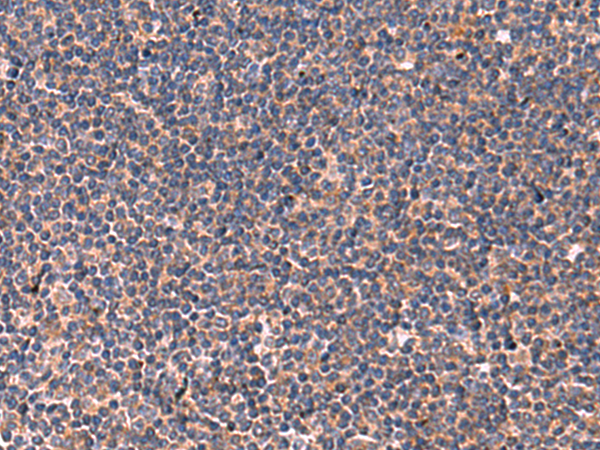

| WB | 1/500-1/2000 | Human,Mouse,Rat |
| IF | 咨询技术 | Human,Mouse,Rat |
| IHC | 1/40-1/200 | Human,Mouse,Rat |
| ICC | 技术咨询 | Human,Mouse,Rat |
| FCM | 咨询技术 | Human,Mouse,Rat |
| Elisa | 1/5000-1/10000 | Human,Mouse,Rat |
| Aliases | JAMC; JAM-2; JAM-3; JAM-C |
| WB Predicted band size | 35 kDa |
| Host/Isotype | Rabbit IgG |
| Antibody Type | Primary antibody |
| Storage | Store at 4°C short term. Aliquot and store at -20°C long term. Avoid freeze/thaw cycles. |
| Species Reactivity | Human, Mouse |
| Immunogen | Synthetic peptide of human JAM3 |
| Formulation | Purified antibody in PBS with 0.05% sodium azide and 50% glycerol. |
+ +
以下是关于JAM3抗体的3篇参考文献及其摘要概括:
1. **文献名称**:*Junctional adhesion molecule-C regulates vascular endothelial permeability by modulating VE-cadherin*
**作者**:Ebnet K, et al.
**摘要**:研究揭示了JAM3(JAM-C)通过调控VE-cadherin的稳定性影响血管内皮通透性,其抗体可用于干预血管渗漏相关疾病。
2. **文献名称**:*JAM3 deficiency results in altered neutrophil trafficking and reduced acute lung injury in mice*
**作者**:Woodfin A, et al.
**摘要**:利用JAM3抗体阻断实验,证明JAM3在中性粒细胞迁移中的关键作用,其缺失可减轻小鼠急性肺损伤的炎症反应。
3. **文献名称**:*JAM3 promotes tumor progression and metastasis through interaction with integrin αvβ3*
**作者**:Naik MU, et al.
**摘要**:研究发现JAM3通过结合整合素αvβ3促进肿瘤转移,抗JAM3抗体可抑制癌细胞侵袭和转移,提示其作为癌症治疗的潜在靶点。
以上研究均涉及JAM3抗体的功能探索,涵盖血管通透性、炎症反应及肿瘤转移等方向。
JAM3 (Junctional Adhesion Molecule 3), also known as JAM-C, is a member of the junctional adhesion molecule family within the immunoglobulin superfamily. It is a transmembrane protein characterized by two extracellular immunoglobulin-like domains, a single-pass transmembrane region, and a cytoplasmic tail involved in intracellular signaling. Primarily expressed in endothelial cells, leukocytes, and platelets, JAM3 plays critical roles in cell-cell adhesion, barrier function maintenance, and leukocyte trafficking. It mediates homophilic (JAM3-JAM3) and heterophilic interactions (e.g., with JAM2 or integrins) to regulate vascular permeability, inflammatory responses, and platelet activation.
JAM3-targeting antibodies have emerged as valuable tools in studying its biological functions and therapeutic potential. Research highlights its involvement in pathological conditions such as chronic inflammation, cancer metastasis, and autoimmune diseases. For example, JAM3 overexpression in tumor vasculature promotes angiogenesis, while its inhibition via antibodies reduces leukocyte infiltration in inflammatory models. Antibodies blocking JAM3 interactions have shown promise in preclinical studies for mitigating diseases like rheumatoid arthritis and multiple sclerosis. However, challenges remain in optimizing specificity and minimizing off-target effects. Current studies also explore JAM3's role in neurological disorders and viral entry mechanisms, broadening its biomedical relevance. These antibodies continue to aid in deciphering JAM3's complex signaling networks and advancing targeted therapies.
×